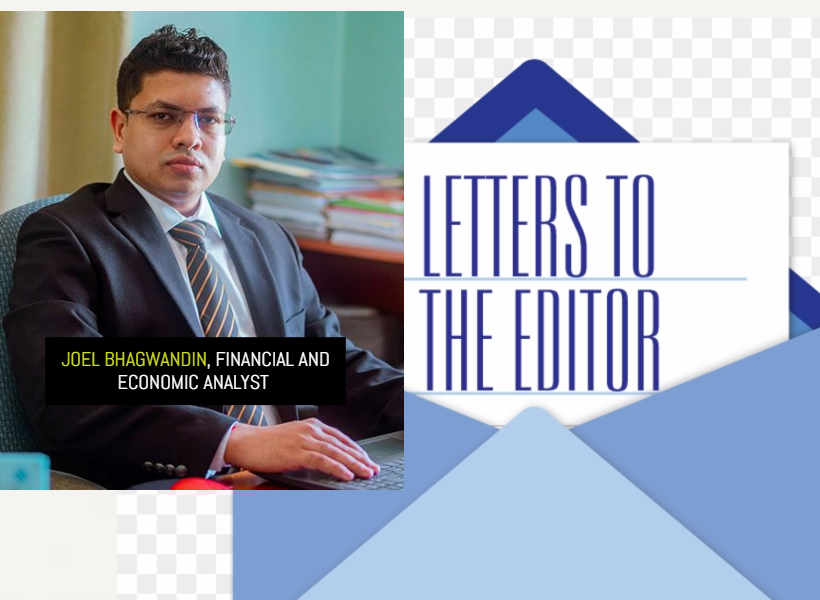Dear Editor,
Further to my letter which was published by Guyana Standard on May 6, 2023, and Guyana Times on May 7, 2023, regarding the recent High Court’s ruling in relation to the Environmental Liability(EL) matter between Esso Exploration and Production Guyana Limited’s (EEPGL)and the Environmental Protection Agency (EPA). As expected, the media is overwhelmed with a plethora of opinionated letters, articles and editorials proliferating the view that the High Court’s ruling should not be appealed by the Government.
EEPGL’s legal obligation as per Condition 14in the Environmental Permit in reference to its “financial assurance and liability for pollution and damage”, are essentially in respect of EEPGL’s and its Parent Company’s contingent liability. To this end, it must be noted that the accounting treatment and disclosure of EEPGL’s / the Parent Company’s contingent liabilities are required to be in conformity with the “Generally Accepted Accounting Principles” (GAAP) financial accounting reporting framework.
GAAP Compliance
Of note, the parent company of EEPGL, namely ExxonMobil, is a U.S multinational corporation. In the United States, the GAAP reporting framework is adopted―and therefore, companies operating in the United States rely on the guidelines established in the GAAP. Under GAAP, a contingent liability is defined as any potential future loss that depends on a “triggering event” to turn into an actual expense.
There are three codifications within the GAAP guidelines that U.S firms rely on with respect to the accounting treatment and reporting requirements for contingent liabilities. These are summarized hereunder:
1. ASC 460 Guarantees:
Guarantees embody two separate obligations: the contingent obligation to make future payments under the guarantee in the event of nonperformance by the party whose obligation is guaranteed, and an obligation to be ready to perform, referred to as a standby obligation, during the period that the guarantee is in effect. As a result of this bifurcation of the obligation, many guarantees are now required to be recognized as liabilities on the balance sheet. Accounting Standards Codification (ASC) 460, Guarantees, consists of one subtopic: ASC 460-10, Overall, which provides requirements to be met by a guarantor for certain guarantees issued and outstanding. ASC 460-10 has two subsections: General, which discusses the guarantor’s recognition and disclosure of a liability at the inception of a guarantee; and product warranties. At the inception of a guarantee, the guarantor recognizes a liability for both the noncontingent and contingent obligations at their fair values.
1. ASC 450 Contingencies:
Accounting Standards Codification (ASC) 450, Contingencies, contains guidance for reporting and disclosure of gain and loss contingencies and has three subtopics. ASC 450-10, Overall, which, along with ASC 450-20 and 450-30, provides guidance on accounting and disclosures for contingencies. ASC 450-20, Loss Contingencies, which describes accounting for potential liabilities in circumstances involving uncertainties. ASC 450-30, Gain Contingencies, which describes accounting and disclosure requirements for gain contingencies. ASC 450-10-55 points out several common estimates that do not fall under the contingency guidance: depreciation, estimates used in accruals, and changes in tax law. Loss contingencies are recognized only if there is an impairment of an asset or the incurrence of liability as of the date of the statement of financial position.
1. ASC 440
: Accounting Standards Codification (ASC) 440, Commitments, contains only one subtopic: ASC 440-10, overall, which provides general guidance on financial accounting and reporting for certain commitments. The subtopic has two subsections: general and unconditional purchase obligation. The general subsection provides guidance for: unused letters of credit; preferred stock dividends in arrears; commitments such as those for plant acquisitions; and obligations to reduce debts, maintain working capital, or restrict dividends. The unconditional purchase obligation subsection provides guidance for unconditional purchase obligations, such as throughput and take-or-pay contracts. ASC 440 applies to all entities and to all relevant transactions. However, for guidance on product financing arrangements, the preparer should look to ASC 470-40-15 and repurchase agreements within the scope of ASC 606-10-55-66 through 55-78. To determine the appropriate guidance, entities should determine first if an obligation is subject to the guidance on leases.
Recording
In accordance with the GAAP framework, contingent liabilities can be broken down into three categories based on the likelihood of occurrence. The first category is the “high probability” contingency, which means that the probability of the liability arising is greater than 50% and the amount associated with it can be estimated with reasonable accuracy.
A “medium probability” contingency is one that satisfies either, but not both, of the parameters of a high probability contingency. These liabilities must be disclosed in the footnotes of the financial statements if either of the two criteria is true.
Contingent liabilities that do not fall into the categories mentioned above are considered “low probability.” The likelihood of a cost arising due to these liabilities is extremely low and, therefore, are not required to be reported in the financial statements. However, sometimes companies include a disclosure of such liabilities.
ExxonMobil’s Contingencies as of December 31, 2022
ExxonMobil and certain of its consolidated subsidiaries were contingently liable at December 31, 2022, for guarantees relating to notes, loans, and performance under contracts. Where guarantees for environmental remediation and other similar matters do not include a stated cap, the amounts reflect management’s estimate of the maximum potential exposure. Where it is not possible to make a reasonable estimation of the maximum potential future payments, future performance is expected to be either immaterial or have only a remote chance of occurrence. As of December 31, 2022, ExxonMobil’s total contingent liabilities/guarantees amounted to US$7.46 billion (ExxonMobil’s Annual Report, 2022).
Commentary
With respect to the worst-case scenario concern, which is not to be discounted, should there be an event where the liability is in excess of the current insurance coverage and the Parent Company Guarantee, it does not necessarily translate to the country becoming exposed to this liability. In this regard, an undertaking from ExxonMobil, the Parent Company, is required, such that if the liability exceeds the insurance coverage and the Parent Company Guarantee, the Parent Company is legally obliged to honor those liabilities.
Suffice it to state, such an undertaking is already in place, inter alia, the Environmental Permit itself. In this respect, there is a clause that followed EEPGL’s affixed signature on the Permit where it states that, “EEPGL hereby accepts the above terms and conditions upon which this Environmental Permit is granted and agree to abide by the Environmental Protection Act, Cap.20:05, Laws of Guyana, the Environmental Protection (Amendment) Act, 2005, and the Environmental Protection (Authorizations) Regulations, 2000, and any existing or forthcoming regulations, best practices, guidelines and standards made under this Act”.
Condition 14.1 of the Permit states that, “the Permit Holder is liable for all costs associated with clean up, restoration and compensation for any damages caused by any discharge of any contaminant, including the cost of all investigations into pollution incidents or discharge of contaminants, conducted at the instance of Agency.” Therefore, even if the cost exceeds the insurance coverage and guarantee amount, the Permit Holder is still liable.
The Valdez Oil Spill
It is interesting to note that proponents of the “unlimited insurance and guarantee” argument have often relied on the BP oil spill in Gulf of Mexico to substantiate their argument. The BP oil spill is considered the largest and most catastrophic environmental disasters in the history of the petroleum industry. There is an overwhelming body of literature and case studies on the BP oil spill, which according to recent studies, cost in excess of $100 billion. One study showed that there was some US$60 billion in hidden cost.
Yet, it is unfortunate that to lend proper context to the discussion, to date no reference has ever been made to the Valdez oil spill involving ExxonMobil in 1989. For the simple reason that BP and ExxonMobil are two different companies and both companies are likely to have different level of safety standards. In fact, the case studies on BP revealed that prior to the oil spill in the Gulf of Mexico, the quality of BP’s safety standards was highly questionable based on a historic trend of inconsistencies.
The Valdez oil spill symbolized one of the lowest points in ExxonMobil’s long history. And in contrast to the BP oil spill which was caused by an explosion on the Deepwater Horizon oil rig which occurred just over a decade ago, the Valdez oil spill was caused by an accident involving the Exxon Valdez supertanker that ran aground in Alaska’s Prince William Sound, which occurred over three decades ago. ExxonMobil took immediate responsibility for the spill and have spent over US$4.3 billion as a result of the accident, including compensatory payments, clean up payments, settlements, and fines. ExxonMobil had voluntarily compensated more than 11,000 Alaskans and businesses within one year of the spill.
Consequently, ExxonMobil undertook significant operational reforms and implemented a robust operational management system which it has deployed globally to prevent future incidents.
Key Take Aways/Summary
v The GAAP framework does not provide for “unlimited guarantee”, hence, it is for this reason that it is impracticable for ExxonMobil to provide such a guarantee. In accordance with GAAP standards, contingent liabilities of this nature (environmental liabilities), an estimate is required. Also, this type of estimation exercise is highly subjective in nature and therefore difficult to predict an accurate estimate for future liabilities arising as a result of an adverse, unforeseen event.
v Further to note is that in estimating these types of liabilities / guarantees, there could be multiple scenarios that can be simulated―giving rise to multiple estimates based on a variety of models. However, the GAAP framework provides for only a single scenario’s estimate and in practice, companies tend to use the scenario that generates the lowest estimate for those liabilities.
v An undertaking from ExxonMobil, the Parent Company, is required, such that if the liability exceeds the insurance coverage and the Parent Company Guarantee, the Parent Company is legally obliged to honor those liabilities. Notably, this undertaking is already obtained, viz-á-viz, the Environmental Permit.
Concluding Remarks
In view of ExxonMobil’s own history dating as far back as three decades ago, the company has not been the subject of any catastrophic event such as BP in the Gulf of Mexico. This speaks to the safety standards of ExxonMobil and considering improvements with new technologies developed three decades later. This alone would render the estimate of its future environmental liability low-to-moderate. In addition, there are other stringent measures being put in place in the case of Guyana, such as the capping stack to further minimize the impact of any unforeseen environmental damages that may occur.
With that in mind, it is unreasonable and imprudent to reference the Gulf of Mexico oil spill event of 2010 that did not involve ExxonMobil, as the benchmark to estimate the future liability in the case of Guyana.
Finally, based on the foregoing discussion and analysis which extends on the contentions highlighted in this author’s previous letter, with the recent Agreement for the Parent Company Guarantee of US$2 billion together with the insurance coverage, and the acceptance of the terms and conditions of the Environmental Permit, it can be safely concluded that EEPGL and its Co-ventures are in compliance with the terms and conditions therein.
Yours sincerely,
Joel Bhagwandin
Public Policy and Financial Analyst













